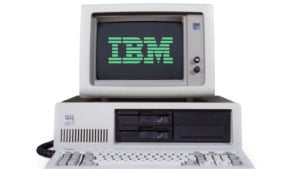Following the rise in interest rates, many stocks, including shares in large, well-known companies, now sport relatively high dividend yields. Yet before you decide to buy, beware of the names best left as dividend stocks to sell.
When you think of the phrase “dividend trap,” what may first come to mind are stocks in companies facing financial challenges or distress, leaving them at a high risk of cutting/suspending their payouts.
However, alongside these types of “dividend traps,” are shares in companies that may continue to have the ability to make steady payouts to shareholders, but due to worsening fundamentals, are at risk of experiencing stock price declines.
Serving as a counter to the payouts, these declines could result in underwhelming, and in some cases, negative, total returns.
Each of the seven dividend stocks to sell listed below fit well within this category. With each one, high yields are outweighed by high uncertainty and high risk.
Citigroup (C)

It’s easy to see why many value investors like Citigroup (NYSE:C) shares right now. The financial services giant sports a 5.45% dividend yield, trades at a more than 60% discount to book value, and has a forward earnings multiple of only 6.5.
But despite its deep value bonafides, C stock has been, and will likely continue to be, a value/dividend trap. Yes, the bank’s latest quarterly results beat expectations. CEO Jane Fraser is also making big efforts to turn Citi around, including the removal of many layers of management. This may help reduce costs and improve efficiency.
Still, the macro picture could keep worsening before it improves. Citigroup also recently reported a rise in credit card delinquencies and net charge-off rates. While now trading at multi-year lows, C shares may have yet to bottom out. Further near-term losses could wipe out any gains from the aforementioned payout.
Ericsson (ERIC)

Shares in Swedish telecom equipment maker Ericsson (ERIC) have been slammed since 2022. Once trading at double-digit prices, this month ERIC has dipped into “penny stock territory,” and now changes hands for around $4.40 per share.
With a forward dividend yield of 5.52%, income-focused investors may be interested in ERIC stock right now. However, I wouldn’t follow their lead. Consider it one of the dividend stocks to sell instead.
As a Seeking Alpha commentator recently discussed, many issues persist with Ericsson, including steadily decreasing profitability, as well as high competition from rivals like Huawei.
These issues could place more downward pressure on ERIC, countering the payout. Not only that, don’t assume Ericsson’s dividend is guaranteed to stay as-is. The company has heavily slashed its dividend before. While not for certain, management could decide to do so again. Until the situation shows signs of improvement, avoid.
Ford (F)

Thanks to the post-pandemic boom in auto sales, Ford (NYSE:F) swung back to profitability in a big way in 2021. That same year, the “Detroit Three” automaker reinstated its dividend, raising it back to pre-Covid levels (15 cents per share quarterly) in 2022.
But while F stock may be high-yielder (5.27%), and has a promising growth catalyst (the company’s EV pivot) on tap, don’t assume that means it’s a name to add to your portfolio right now. Wait, after pulling back sharply for nearly two years, isn’t recession risk already priced-in?
Not necessarily. Analysts keep walking back earnings forecasts for 2024. If expectations keep dropping, so could the price of F shares. If earnings decline sharply next year, Ford’s dividend could again be under threat of a cut/suspension. Throw in other issues, like ongoing labor troubles, and it’s clearly best to stay away for now.
IBM (IBM)

IBM (NYSE:IBM) shares performed well during the summer, but the recent resurgence in interest rate and recession worries has placed pressure on the venerable tech company’s shares since September.
Currently, IBM stock is arguably trading at a reasonable earnings multiple (14.5) right now. Shares also have a forward dividend yield of 4.82%. However, before you decide to run out and buy “Big Blue” for your portfolio, keep in mind that further declines may be just around the corner.
Although IBM could be an AI software company the market still regards as a computer hardware company. If it cannot impress the market with its upcoming quarterly earnings release on Oct. 25, the giving-back of recent gains could continue. You may want to give the stock a second look if it re-hits its lows, yet for now, include it on your list of dividend stocks to sell.
3M (MMM)

3M (NYSE:MMM) may be a blue-chip with a high dividend yield (6.66%) to boot, but I’ve long considered it one of the top blue-chips to sell. As you may know, this industrial conglomerate has been dealing with two major class-action lawsuits in recent years.
3M is settling in both the military earplug and PFAS suits. Admittedly, litigation may not be as much of a headwind anymore for MMM stock as it was earlier this year. The improved full-year outlook contained in 3M’s latest quarterly earnings release may also suggest it’s time to change my view.
Yet despite these promising developments, I’m still considering MMM one of the dividend stocks to avoid. While so far success in countering declining sales with cost cutting, this may prove not as effective in 2024, if slow demand persists. Subsequent fiscal results could be far less stellar, keeping shares on a downward trajectory.
Pfizer (PFE)

At first glance, Pfizer (NYSE:PFE) may seem like another situation where negatives are already baked into the stock price. The pharma giant’s shares have declined significantly, ever since the mass wave of Covid-19 vaccination peaked nearly two years ago.
Yet while PFE stock has fallen back to pre-Covid price levels, it may be too soon to consider it a buy, even as shares have a forward dividend yield of 5.39%. As Louis Navellier and the InvestorPlace Research Staff argued earlier this month, a growth resurgence for now appears doubtful.
Mainly, because Pfizer doesn’t appear to have a blockbuster drug in its pipeline that could measure up to Pfizer’s vaccination windfall. We’ll have a better idea of what lies ahead for Pfizer, when it releases earnings on Oct. 31, but for now, this is another name that belongs in the “dividend stocks to sell” category.
Walgreens Boot Alliance (WBA)

With 46 consecutive years of dividend growth, not only is Walgreen Boots Alliance (NASDAQ:WBA) a “dividend aristocrat.” The pharmacy giant is just four years away from attaining “dividend king” status.
That is, if the dividend (currently giving WBA stock a forward yield of 8.98%) continues to increase. Weak sales and inflationary pressure have put the squeeze on earnings and cash flow. Earlier this week, Tim Wentworth, formerly CEO of Express Scripts, became CEO of the company.
Wentworth is expected to implement a sweeping turnaround plan, which could include a cut to WBA’s dividend. WBA may hold steady now, but news of the cut will likely bring another round of volatility for shares. The market could also adopt a “show me” stance regarding the turnaround, meaning poor performance until the first signs of improvement emerge. As poor performance may carry on in the near-term, sell/avoid this stock.
On the date of publication, Thomas Niel did not hold (either directly or indirectly) any positions in the securities mentioned in this article. The opinions expressed in this article are those of the writer, subject to the InvestorPlace.com Publishing Guidelines.
5G, Technology, Artificial Intelligence, Consumer Discretionary, Automotive, Financial, Bank, Communications, Electric Vehicles, Industrial, Software
